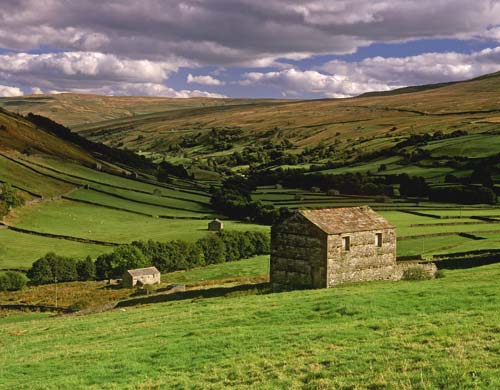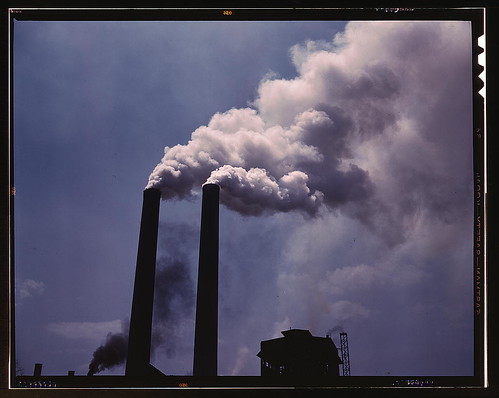Madagascar’s New Species

For scientists looking to discover new species, Madagascar is the treasure trove: according to a new World Wildlife Fund study, scientists have found more than 600 new types of plant and animal life in the last decade alone! Why is Madagascar such a breeding ground for diverse creatures? The island is pretty isolated, and it’s stayed that way for centuries. Plus, the landscape is varied: there’s mountains, rainforest, and everything in between.
Researchers have discovered everything from the 10 cm-long Berthe’s mouse lemur to the “Glam Rock” chameleon in the picture above. National Geographic has some great shots of the new species, from tiny and furry to scaly and thorny.
But the report is also a reminder that some of these very special – and unique – creatures are under threat due to climate change and the practice of clearing forests in Madagascar for wood and other natural resources.
The WWF says the only way to protect all those species is for the locals themselves to get involved.
What is Nature Worth?

For the first time, we have a comprehensive idea of nature’s financial worth: the National Ecosystem Assessment
carried out an intensive study of the UK’s natural environment and how it benefits Britain’s economic prosperity. The result: nature is very important to the UK. According to the study, nature provides Britain with tens of billions of pounds in services every year – all for free.
Hundreds of experts in economics, social sciences and ecology worked together to assess different aspects of the UK’s ecosystems across a series of habitats, like woodlands and cities and farms. Those ecosystems provide services like water purification and crop fertilization that are extremely important to an economy, even when we don’t realize it.
The environment ministry says the study will help shape the UK’s environmental policy. But it’s also important to stock of the state of Britain’s natural wealth: 30% of the natural services they studied are suffering because of climate change.
What is nature worth in your country?
C40 Commitment to Change?

The World Bank and the C40 – the mayors of the world’s 40 biggest cities – have come to an agreement to fund the fight against climate change! The leaders met in Sao Paulo in Brazil to come up with a concrete plan to cut their respective cities’ carbon footprints, and the World Bank promised financial support for those efforts.
Why is that news important? Well, megacities like New York, Rio de Janeiro, Paris and Jakarta are responsible for 12% of the world’s greenhouse gas emissions. And all too often, they just don’t have the budget to implement green-friendly projects without outside help. Plus, the World Bank released a study at the C40 summit that says around 1 billion people worldwide who are living in big city slums are especially threatened by climate change. So if the 40 biggest metropolises can charge ahead now, we could see some drastic improvements in creating a cleaner planet and a green future.
Do you live in any of the C40 megacities? If so, how has climate change affected urban life there?
Windy City Preparing for Reality of Climate Change

The New York Times recently featured an interesting article about what one major city is doing to prepare for the inevitable: global warming. The U.S. city of Chicago, known as the “Windy City,” is used to cold winters and pretty warm summers, but those summers could get a lot hotter, and soon.
A team of climate scientists put together a report for city planners about the future of Chicago as the city continues to get warmer. And the city was in for a shock: by the end of the century, Chicago could experience temperatures of 32 degrees (celsius) or more for up to 72 days. The city only got that hot for about 15 days a year during the last century. That added heat could have some serious consequences, like damaged roads and property as well as more heat-related deaths every year.
So city planners are being proactive. They’re using thermal radar to find Chicago’s hottest zones and adding green vegetation there instead of pavement to create a cooler surface. Concrete streets are getting a facelift, too, with a fresh coat of pavement that lets rainwater seep through into the ground below. And the state’s famous white oak trees are being replaced with special trees that keep cool in hot climates–like sweet gum trees.
Chicago wants cope with its warming temperatures now rather than later in the hope that the transition won’t be so tough later on. So what do you think: is this a good model for cities to prepare for the future?
Decreasing Chance of limiting the global increase in temperature to 2ºC

(Photo: CC/Library of Congress)
Bad news for climate-savers: According to the latest estimates by the International Energy Agency (IEA), energy-related carbon-dioxide (CO2) emissions were the highest ever meted in history. After a dip in 2009, that was caused by the global financial crisis, the emissions have climbed to a record of 30.6 Gigatonnes (Gt) in 2010. Thats a jump of 5% from the previous record year in 2008, when levels reached 29.3 Gt, the IEA claims. In addition, the IEA has estimated that 80% of projected emissions from the power sector in 2020 are already locked in, as they will come from power plants that are currently in place or under construction today.
During the latest UN climate change talks in Cancun in 2010 global leaders actually agreed to a target of limiting temperature increase to 2°Ct. To achieve this goal, the long-term concentration of greenhouse gases in the atmosphere must be strictly limited.








Feedback